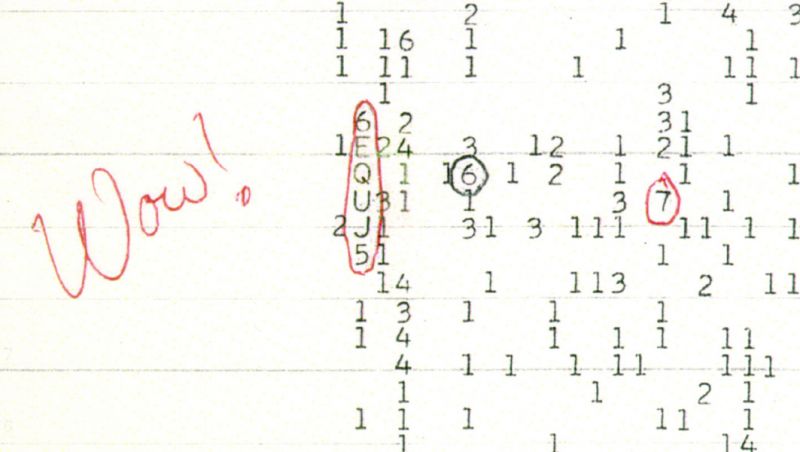
Planetary Picture of the Day
Week of July 15, 2024
Sulfur-bearing rock on Mars? Yes, we have that. Plus a hand-colored image from Mars, a layered crater on Mars, Mercury in transit, and Pluto's moon Nix.
Monday, 15 July 2024
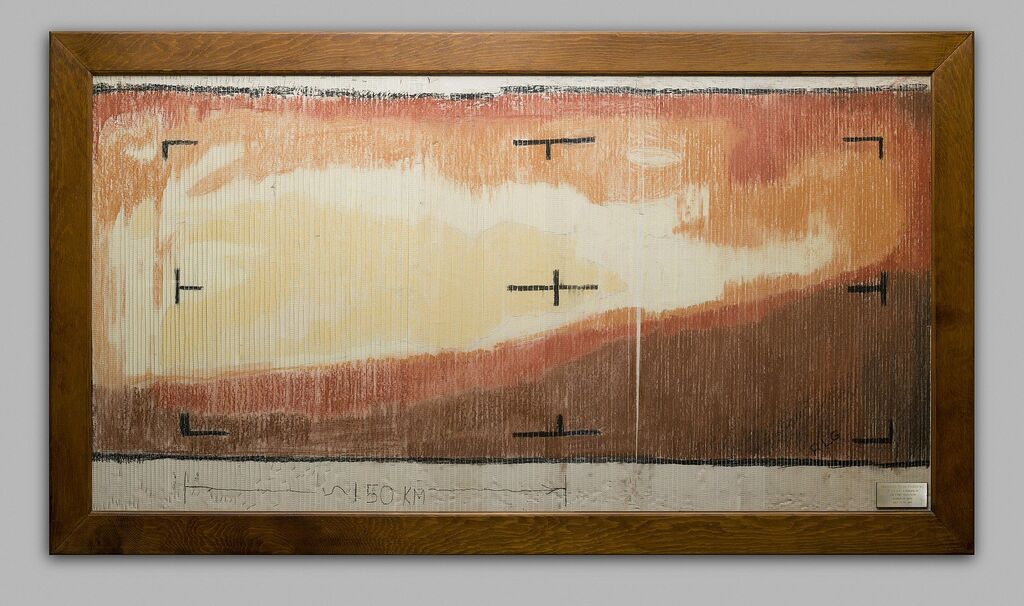
First Digital Image From Mars
On this date in 1965, Mariner 4 made its closest approach to Mars, simultaneously making history by taking the first photos of another planet from space. A "real-time data translator" machine converted digital image data into numbers printed on paper strips. Too anxious to wait for the official processed image, employees from the Voyager Telecommunications Section at NASA's Jet Propulsion Laboratory attached these strips to a display panel and hand-colored the numbers like a paint-by-numbers picture. The completed image was framed and presented to JPL director, William H. Pickering. The 22 photographs revealed the existence of lunar-type craters upon a desert-like surface.
Tuesday, 16 July 2024
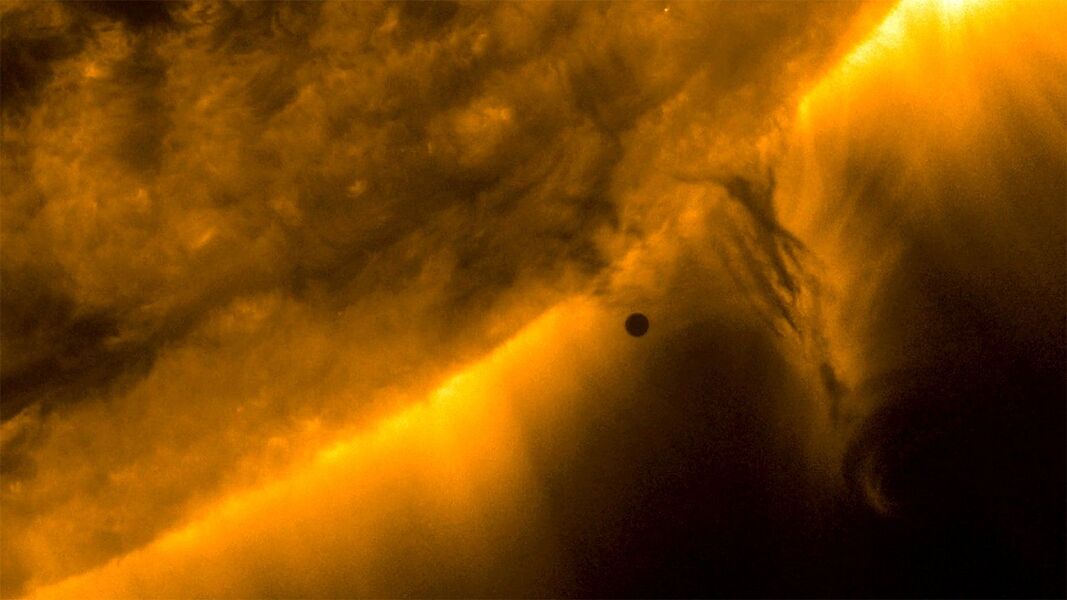
Mercury in Transit
This image of Mercury transiting the Sun was taken on 3 January 2023 by the ESA/NASA Solar Orbiter’s Extreme Ultraviolet Imager instrument. At the time, Mercury was 46.7 million kilometers from the Sun.
Wednesday, 17 June 2024
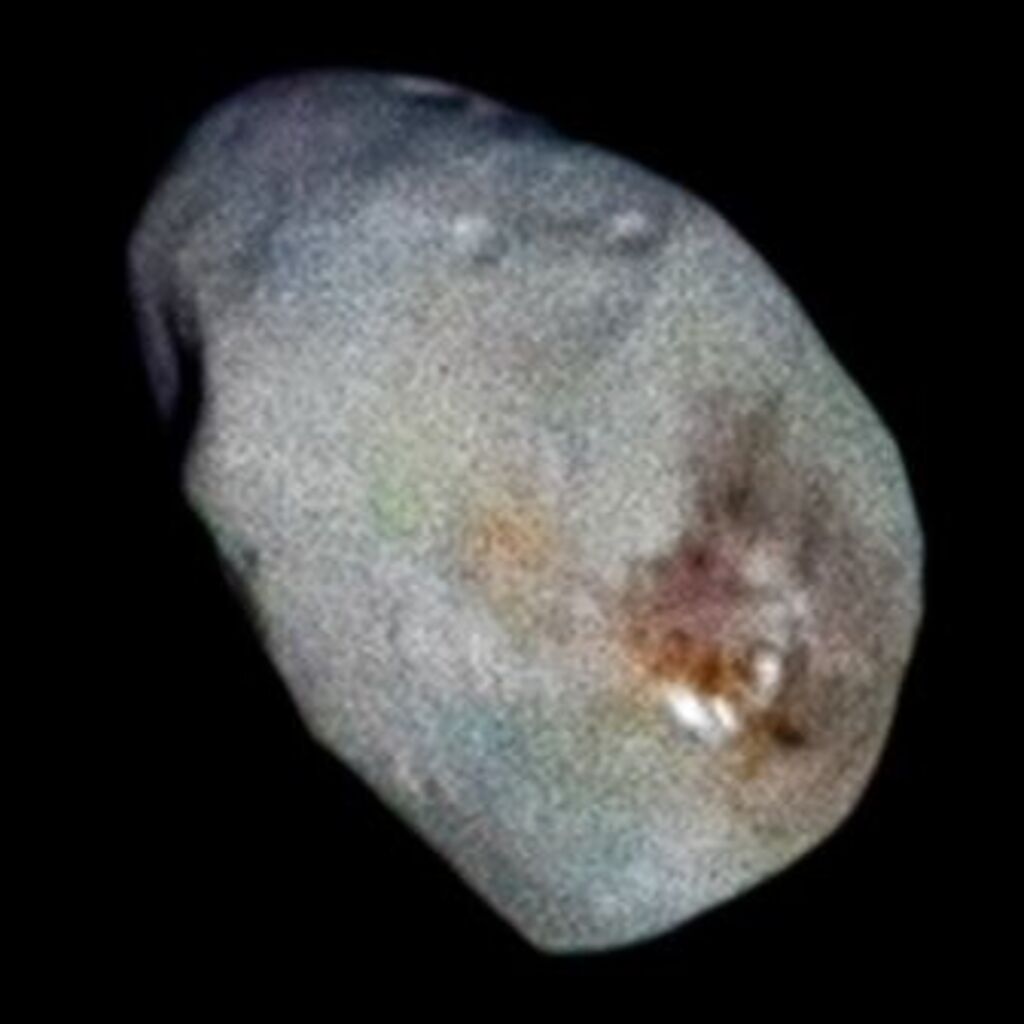
Janus in Front of Saturn
This is the best view of Nix, a natural satellite of Pluto, with a diameter of 49.8 km across its longest dimension. The tiny moon was discovered along with Pluto's outermost moon Hydra on 15 May 2005 by astronomers using the Hubble Space Telescope in advance of the arrival of the New Horizons spacecraft. The large reddish area is possibly an impact crater.
Thursday, 18 July 2024
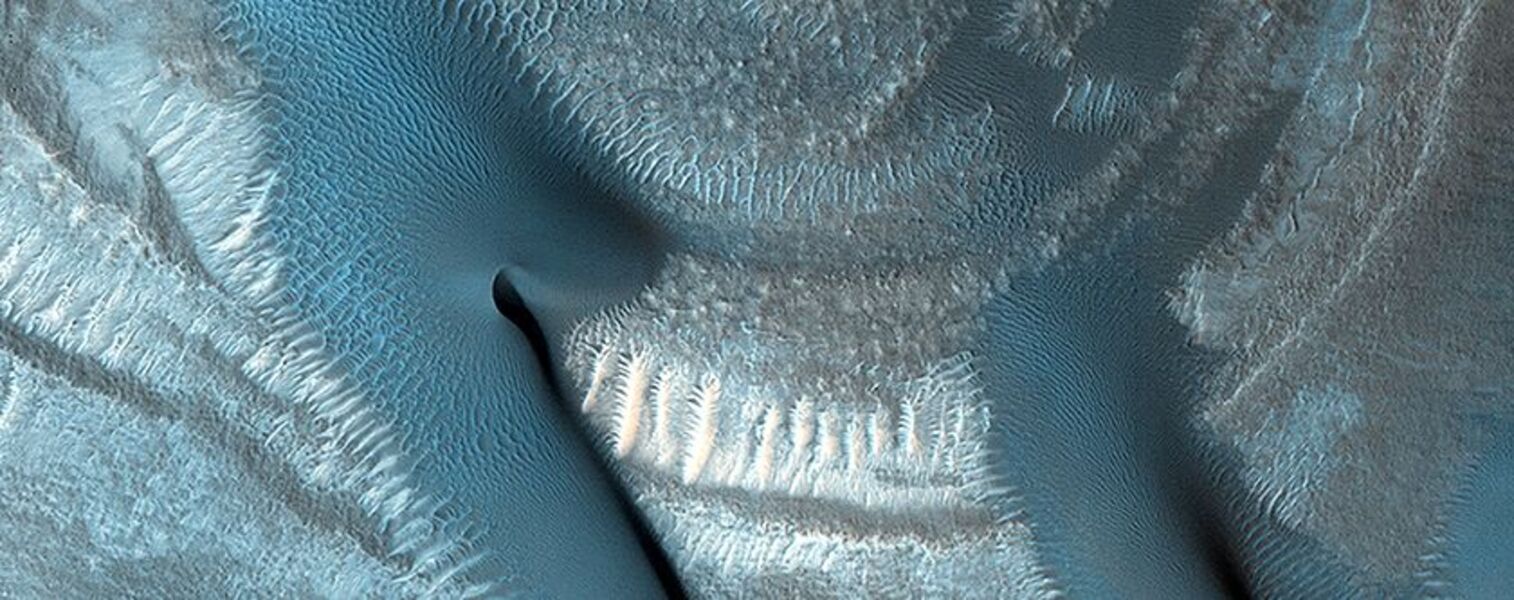
Layers in a Crater in Nilosyrtis, Mars
This impact crater in the Nilosyrtis region of Mars contains numerous layers that are exposed along its floor. These layers formed long after the impact event and are likely deposits of dust and ice. Also, look at these dunes of dark sand that probably blew in from the surrounding terrain. This image is less than a kilometer across. The blue filter is applied to extract information about texture and composition. The natural color would be rusty brown.
Friday, 19 July 2024
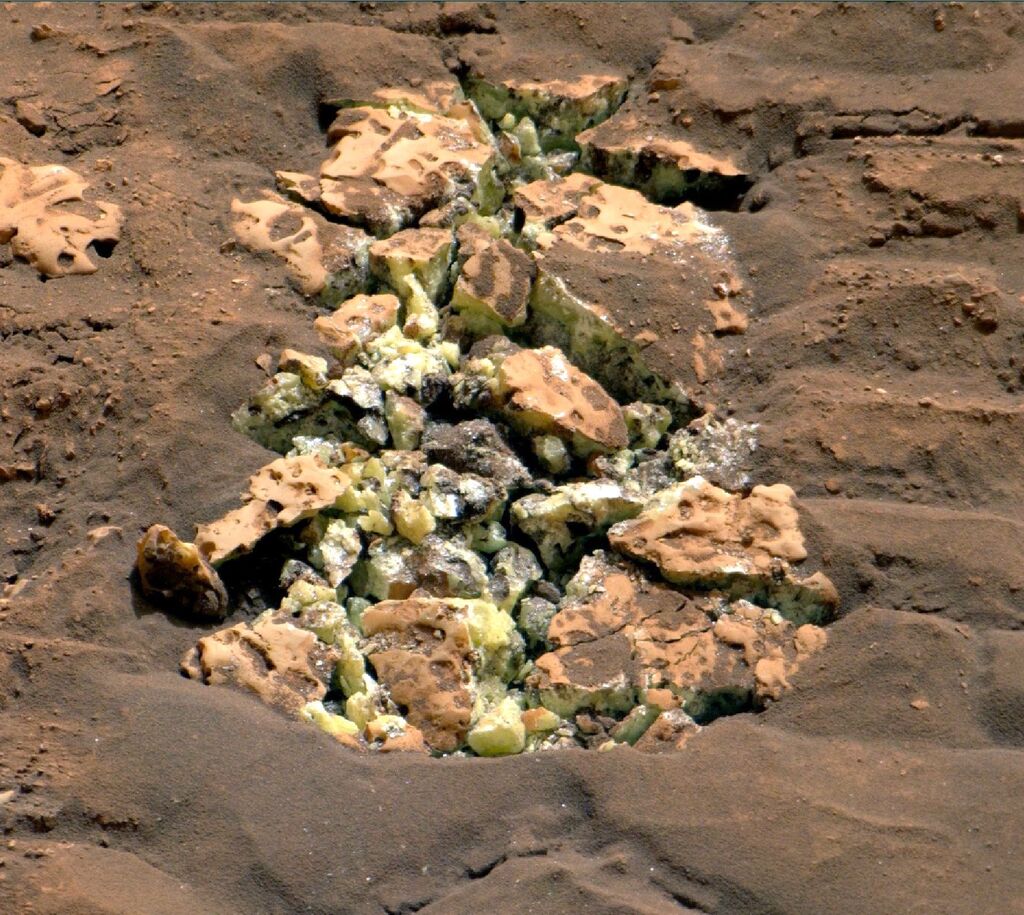
CRONCH
NASA's Curiosity rover ran over a rock and found crystals inside! They're pure sulfur. Elemental sulfur is something we’ve never seen before on Mars. We don't know much about these yellow crystals yet, but the team is already at work to figure it out!





